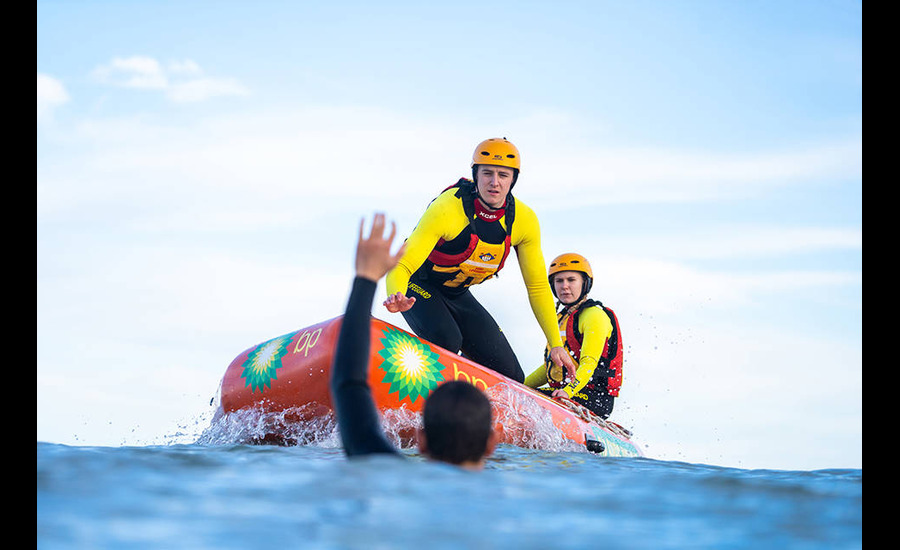How Do the Lifeguards Ensure Beach Safety? Strategies and Challenges
Beaches are darling destinations for millions around the world, offering sun, sand, and surf. However, the charm of the beach likewise brings inborn risks that require the presence of prepared lifeguards. Here, we dive into the comprehensive systems lifeguards utilize to ensure beach safety, from hazard assessment to emergency response.
-
Understanding Beach Hazards
Before lifeguarding duties commence, a careful assessment of potential hazards specific to the beach environment is basic. Key considerations include:
- Tear Currents: These strong flows can swiftly divert swimmers from shore. Lifeguards should identify tear current-prone regions and instruct beachgoers on how to recognize and get away from them.
- Changing Tides: Understanding flowing examples is pivotal as they can impact water profundity and momentum strength, influencing swimmer safety.
- Underwater Obstacles: Rocks, coral reefs, and submerged trash present secret dangers. Lifeguards ought to identify and check hazardous regions to prevent accidents.
-
Setting Up Powerful Surveillance
vital placement of lifeguard stations is fundamental to ensuring comprehensive beach coverage. Lifeguards stationed at raised positions or outfitted with optics improve perceivability across enormous stretches of beachfront. Regular watches and turning shifts further alleviate vulnerable sides, ensuring constant surveillance.
The lifeguard training makes you able to handle all types of water hazards and emergencies. The lifeguards who have undergone lifeguard training are the most fit for keeping the beaches safe and secure for the visitors.
-
Implementing Clear Safety Guidelines
Clear and concise signage displaying safety rules and guidelines is crucial for informing beach visitors about safe practices. These guidelines typically include:
- Swimming Areas: Assigning safe zones for swimming and portraying regions with potential hazards.
- No Diving Zones: Making visitors aware of shallow waters or submerged deterrents where diving presents risks.
- Limit Markers: Lay out noticeable markers or banners to show safe limits for water exercises.
Teaching beach visitors about these guidelines cultivates a culture of safety and empowers responsible beach conduct.
- Conducting Regular Training Drills
Lifeguard preparation relies on thorough and ongoing training programs. Regular drills recreate different emergency scenarios, honing lifeguards’ response skills and teamwork. Training sessions include:
Rescue Techniques: Rehearsing water rescue moves with rescue sheets, tubes, and other essential equipment.
First Aid Protocols: Training in CPR, AED use, and basic first aid prepares lifeguards to immediately control basic consideration.
These drills ensure lifeguards are prepared to deal with emergencies swiftly and successfully, limiting response times and augmenting casualty endurance rates.
-
Using Legitimate Rescue Equipment
Outfitting lifeguard stations with cutting edge rescue gear is vital to compelling beach safety management. Essential equipment incorporates:
- Flotation Devices: Different sorts of life coats and lightness aids are appropriate for different water conditions.
- Rescue Boards: Lightweight yet solid sheets utilized for swift water rescues, particularly in surf zones.
- First Aid Kits: Loaded with medical supplies and medications to give immediate attention to harmed or distressed people.
Regular upkeep and inspections of equipment ensure operational status and reliability when emergencies emerge.
-
Discussing Successfully with Beach Visitors
Viable communication skills are foundational to lifeguard duties. Lifeguards connect with beach visitors in numerous ways:
- Safety Guidance: Offering proactive exhortation on safe swimming work, recognizing and staying away from hazards, and understanding beach banner alerts.
- Emergency Alerts: Giving clear and definitive instructions during emergency situations to ensure swift and precise evacuations or responses.
Congenial and educational communication encourages trust and cooperation among lifeguards and beachgoers, enhancing, generally speaking, beach safety.
-
Working together with Local Specialists
Laying out cooperative associations with local emergency services and policing is essential for beach safety endeavors. Shared help and coordinated response protocols smooth out emergency management, ensuring quick and viable interventions in basic situations.
-
Teaching the Public about Beach Safety
Public education drives play a vital role in promoting beach safety mindfulness and cultivating a responsible beach culture. Educational programs and workshops can cover:
- Water Safety Tips: Teaching visitors to recognize and respond to tear flows, flowing changes, and other water hazards.
- Beach Banner Systems: Making sense of the significance of different hued banners used to demonstrate water conditions and safety levels.
- Emergency Procedures: Giving guidelines on how to summon lifeguards, manage basic first aid, and respond to emergencies until help shows up.
By providing beach visitors with knowledge and skills, lifeguards contribute to a safer beach environment where everyone can partake in the sea responsibly.
Final Word
Lifeguards are imperative watchmen of beach safety, utilizing proactive procedures and specialized skills to prevent accidents and respond swiftly to emergencies. The commitment to thorough lifeguard training, compelling communication, and cooperative organizations underscores the mission of the American Lifeguard Association to safeguard lives and improve beachgoer experiences.






